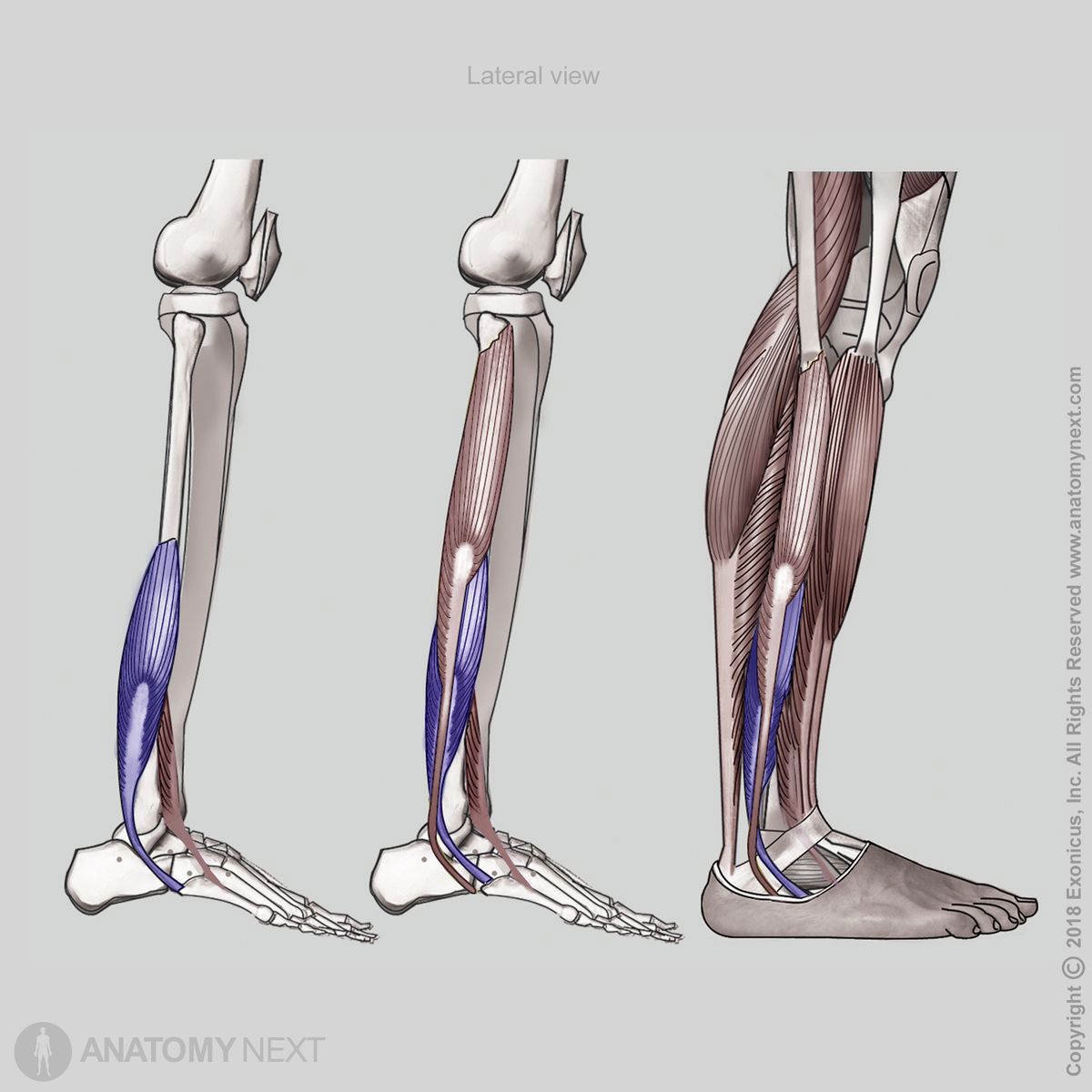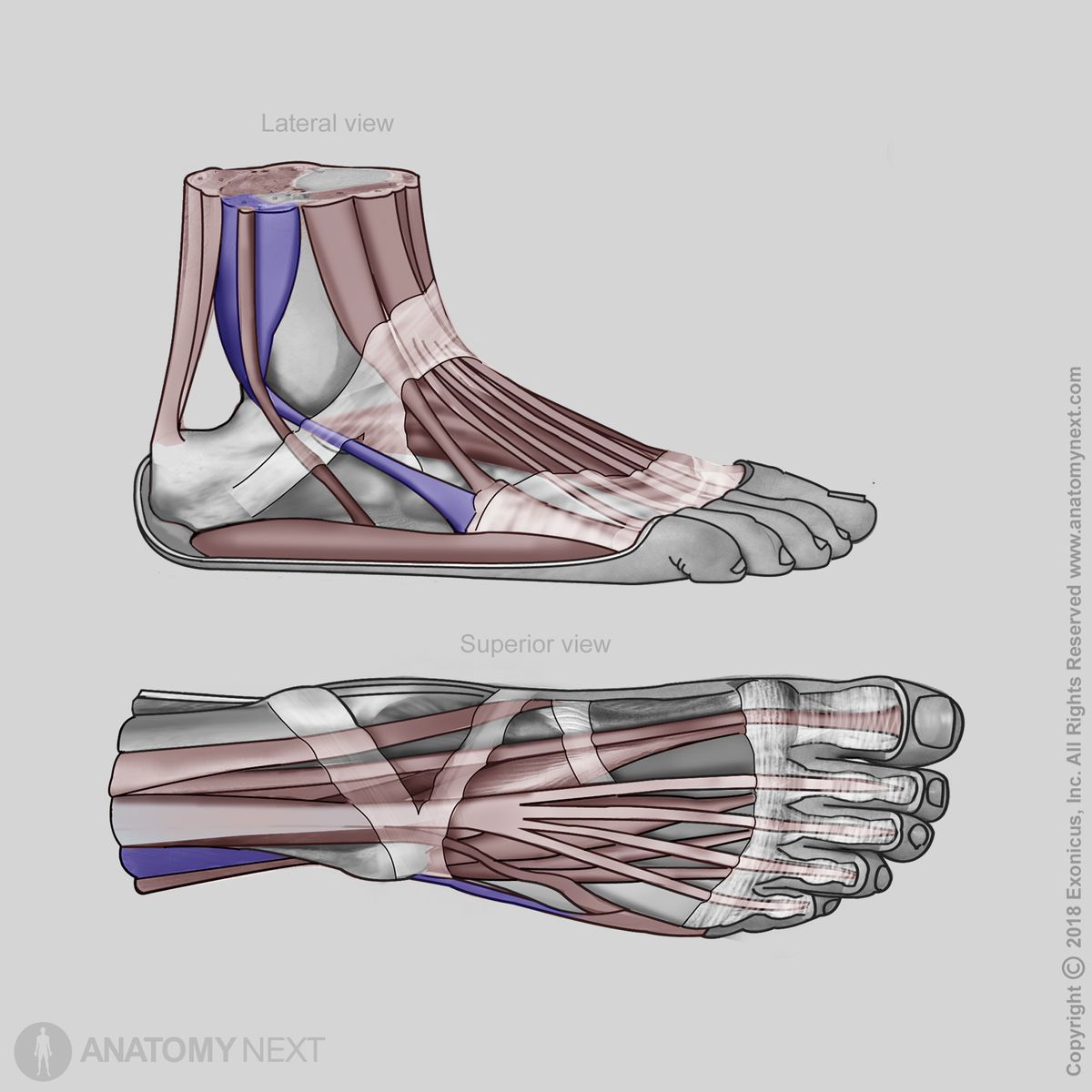- Anatomical terminology
- Skeletal system
- Joints
- Muscles
- Head muscles
- Neck muscles
- Muscles of upper limb
- Thoracic muscles
- Muscles of back
- Muscles of lower limb
- Pelvic muscles
- Muscles of thigh
- Muscles of leg
- Anterior compartment
- Lateral compartment
- Posterior compartment
- Muscles of foot
- Heart
- Blood vessels
- Lymphatic system
- Nervous system
- Respiratory system
- Digestive system
- Urinary system
- Female reproductive system
- Male reproductive system
- Endocrine glands
- Eye
- Ear
Peroneus brevis
The peroneus brevis (Latin: musculus peroneus brevis; musculus fibularis brevis), also known as the fibularis brevis, is a small and relatively short muscle located in the lateral compartment of the lower leg inferior to the peroneus longus. It extends between the fibula and fifth metatarsal bone. The distal aspect of the muscle forms a tendon that runs just posterior to the lateral malleolus and crosses the ankle.
| Peroneus brevis | |
| Origin | Distal two-thirds of lateral surface of fibula |
| Insertion | Tuberosity of 5th metatarsal bone |
| Action | Foot plantarflexion, foot eversion, supports lateral longitudinal arch of foot |
| Innervation | Superficial peroneal (fibular) nerve (L5 - S2) |
| Blood supply | Peroneal (fibular) artery |

Origin
The peroneus brevis originates from the distal two-thirds of the lateral surface of the fibula.
Insertion
The peroneus brevis inserts on the tuberosity of the fifth metatarsal bone.

Action
The peroneus brevis provides plantarflexion of the foot at the talocrural (ankle) joint and foot eversion at the subtalar joint. Also, it supports the lateral longitudinal arch of the foot.
Innervation
The peroneus brevis is innervated by the superficial peroneal (fibular) nerve (L5 - S2) - a branch of the common peroneal (fibular) nerve.
Blood supply
The peroneus brevis muscle receives arterial blood supply from the peroneal (fibular) artery - a branch of the posterior tibial artery.